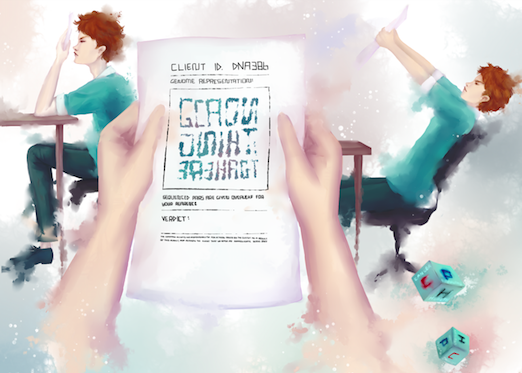The dark side of DNA testing
One hundred and fifty years ago, in a laboratory in Germany, a young scientist named Friedrich Miescher identified an unusual new chemical while studying white blood cells. At first scientists assumed it was unimportant, but then they began to uncover its remarkable structure: a double helix held together like a zip by pairs of chemical building blocks, nucleotides known by their initials A, C, T, and G. Even more impressive, the sequence of these nucleotides blocks encodes information about proteins, the workhorse molecules of cells. Today, home testing kits allow anyone to access their DNA sequence. But with science racing ahead of public understanding of genetics, we risk misunderstanding and misusing this information–with worrying consequences.
By one estimate, 1 in 25 Americans had used one by 2017. Only a few among them, however, actually understood how they work. The basis of these tests is the single nucleotide polymorphism (SNP). This is a location in the DNA where the specific nucleotide widely varies among the population. DNA testing companies use a device called a SNP chip to rapidly examine 700,000 SNPs and determine their identity. They can then compare how similar your SNPs are to other people’s or look for SNPs associated with diseases. This process makes genetic test kits both useful and potentially misleading.
DNA firms tout the promise of helping people understand their health. Most test kits look at many SNPs associated with disease – the most famous probably being BRCA. Mutations in the BRCA gene can increase a woman’s risk of breast cancer from 12.5 % to up to 90%. Checking for disease-causing variations seems like a good thing. Knowing their risk allows women to take proactive steps like Angelina Jolie, who had a double mastectomy when her BRCA mutation was found. However, the reality is not so simple.
In a recent paper, scientists at the University of Exeter found that more than 84% of SNP chip results showing a rare mutation in the BRCA gene were actually false positives, suggesting that 84% of the women told they have a rare BRCA variant are healthy. SNP chip results can lead to months of worry and unnecessary surgeries, which waste NHS time and resources and put women at risk of complications. Conversely, being told that your results do not show a problem does not mean you are completely in the clear. Diseases like cancer and Alzheimer’s are genetically complex and have been linked with millions of SNPs – many more than home kits test for. By falsely scaring healthy people and falsely comforting potentially sick people, misunderstanding of tests could prove a health disaster in the long term.
Alongside health, probably the most popular use of home test kits is ancestry research, exploited by tourism companies taking advantage of a powerful need to understand our origins.
Companies achieve this is by taking samples from different geographical regions and finding out which SNPs are most associated unique to particular places. DNA is then compared to these reference samples, giving a percentage similarity score for each region. However, it is a questionable method for ancestry testing: many regions are underrepresented, and the historic regional genetic composition is not accounted for, whilst arguably reinforcing culturally backward ideas about nationality. This is especially worrying in today’s political climate where questions of identity are fraught. In Israel for instance, DNA testing is already being used to “prove” Jewishness before a couple are allowed to marry.
Home DNA testing offers everyone a chance to learn about aspects of their genetic make-up. However, that knowledge is useless unless we have the right context to use it properly. As these kits grow in popularity, the NHS will have to reconsider the services it provides to ensure that people do not misinterpret or misuse their testing results. More broadly, our understanding of what our genes mean for our place in society must change as knowing details about our genome becomes the norm rather than the exception. A century and a half on, we are only now beginning to fully reckon with the con‐sequences of Miescher’s momentous discovery.
This article was first published in our Michaelmus Term 2019 Issue: Perspective
Artwork by Tiffany Duneau





